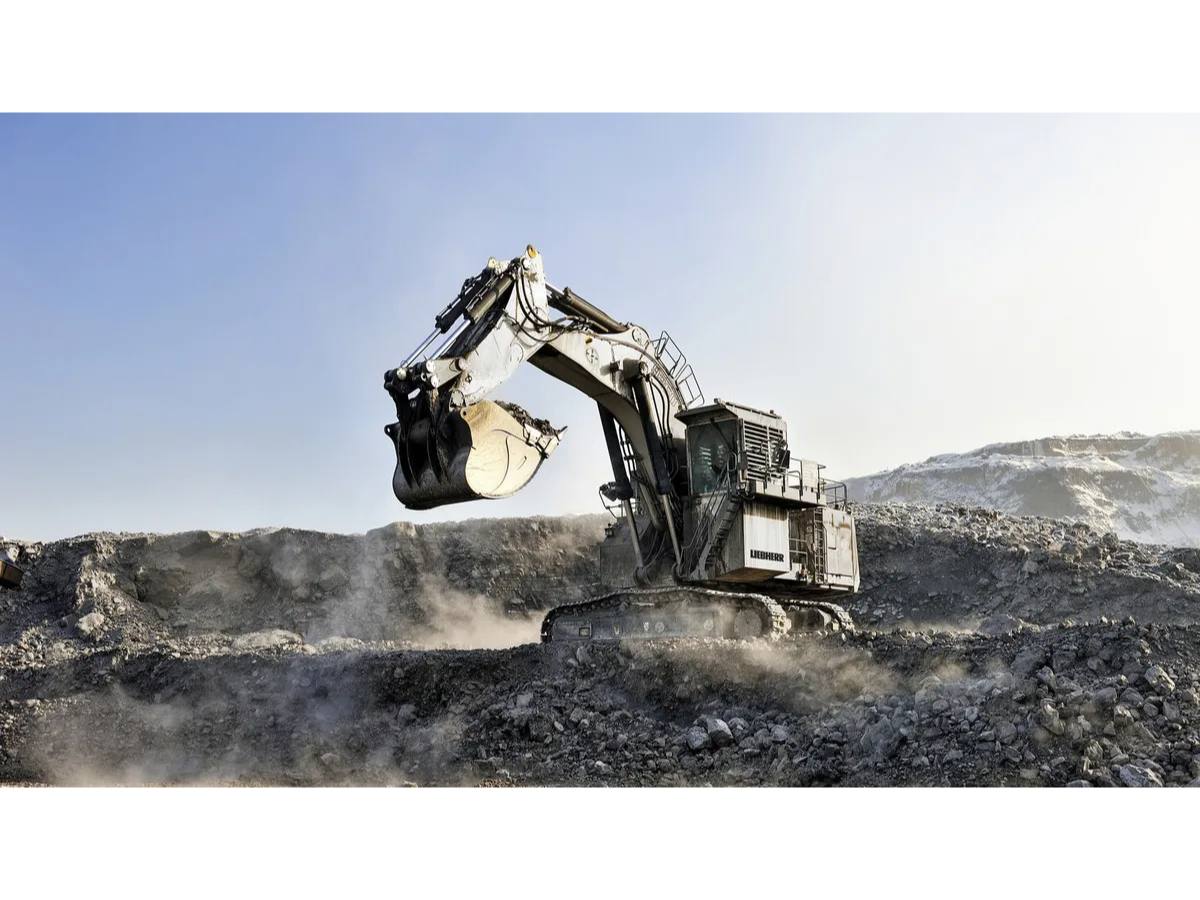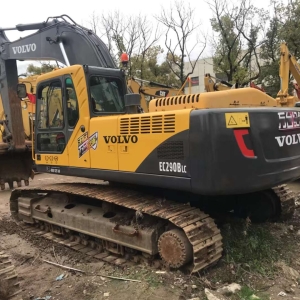50 common fault codes and solutions for Liebherr excavators. Routine use and maintenance can increase service life and reduce failure rate.
上海华诚二手挖掘机市场 / 2024-05-18As a world-renowned excavator manufacturer, Liebherr has a lot of users. As the excavator is used longer and longer, various problems will occur with the equipment. The emergence of excavator fault codes can actually help users as soon as possible. Understand the mechanical failures that may or have occurred in the equipment, because the fault codes of excavators from different manufacturers, different years and models will have slight deviations as the equipment is updated. Especially in recent years, there are more and more electronic equipment in excavators, and older models There are also different errors with new models. The excavator maintenance manual that excavator users need to master in advance is the user manual.

Some users reported that damage to the excavator is common due to misjudgment of fault codes caused by operating excavators of different brands. Below, TD will briefly introduce 50 common Liebherr fault codes and detection methods in our daily use of excavators. Here Users are reminded not to rely too much on equipment alarms to solve problems. Manual inspections of excavator equipment are required from time to time to detect other faults other than sensors.
1. E001 - Engine overheating: Check whether the radiator and cooling system are working properly, make sure the coolant level is normal, and clean the radiator.
2. E002 - Low oil pressure: Check for leaks in the hydraulic system, make sure the hydraulic oil level is adequate, check the hydraulic pump and filter.
3. E003 - Hydraulic oil temperature is too high: Check the cooling system of the hydraulic system to ensure that the cooler and radiator are working properly.
4. E004 - Abnormal engine speed: Check the engine control system, which may be caused by a faulty throttle or throttle sensor.
5. E005 - Hydraulic system leakage: Check whether the hydraulic lines and connections are tight and replace damaged seals.
6. E006 - Tank level is too low: Check the hydraulic tank and add enough hydraulic oil.
7. E007 - Engine cannot start: Check the fuel supply system, ignition system and engine sensors, clean or replace the air filter.
8. E008 - Oil pressure sensor failure: Check the oil pressure sensor and related electrical connections, the sensor may need to be replaced.
9. E009 - Engine lacks power: Check the fuel injection system, clean or replace the injectors, check the air filter.
10. E010 - Hydraulic system overload: Check the working load of the hydraulic system. It may be necessary to increase the amount of hydraulic oil or adjust the working parameters.
11. E011 - Hydraulic oil contamination: Replace the hydraulic oil filter and clean the hydraulic oil tank and pipelines.
12. E012 - Battery voltage is too low: Check the battery voltage and charging system, the battery or charger may need to be replaced.
13. E013 - Hydraulic cylinder oil leakage: Check the hydraulic cylinder seals. It may be necessary to replace the sealing ring or repair the hydraulic cylinder.
14. E014 - Abnormal engine exhaust: Check the engine exhaust system. It may be caused by a blocked exhaust pipe or a faulty exhaust valve.
15. E015 - Oil pressure is too high: Check the pressure regulating valve of the hydraulic system. The pressure regulating valve may need to be adjusted or replaced.
16. E016 - Hydraulic oil temperature is too low: Check the hydraulic oil cooling system, it may be necessary to add a cooler or change the working environment.
17. E017 - Hydraulic pump failure: Check the hydraulic pump and related connections, the pump may need to be replaced or repaired.
18. E018 - Hydraulic oil contamination: Replace the hydraulic oil and filter and clean the hydraulic system.
19. E019 - Engine water temperature is too low: Check the engine cooling system to ensure that the temperature sensor and water pump are working properly.
20. E020 - Oil pressure sensor failure: Check the oil pressure sensor and electrical connections, the sensor may need to be replaced.
21. E021 - Abnormal engine air intake: Check the air filter and intake pipe to ensure smooth air flow.
22. E022 - Abnormal noise from the hydraulic pump: Check the hydraulic pump and related components. It may be necessary to replace the hydraulic pump or reduce the workload.
23. E023 - Oil temperature sensor failure: Check the oil temperature sensor and related electrical connections, the sensor may need to be replaced.
24. E024 - Engine idle speed is unstable: Check the fuel supply system and ignition system. It may be necessary to replace the injector or adjust the ignition timing.
25. E025 - Abnormal noise in the hydraulic system: Check the oil and filter of the hydraulic system. The hydraulic oil or filter may need to be replaced.
26. E026 - Low oil pressure: Check the hydraulic pump and pressure regulating valve. The hydraulic pump may need to be adjusted or replaced.
27. E027 - Insufficient engine power: Check the fuel system and engine control unit, the injectors may need to be cleaned or replaced.
28. E028 - Hydraulic cylinder does not work: Check the hydraulic cylinder and related connections, the seal may need to be replaced or the hydraulic cylinder repaired.
29. E029 - Hydraulic oil temperature is too low: Check the hydraulic oil cooling system, it may be necessary to add a cooler or change the working environment.
30. E030 - Oil contamination: Replace the hydraulic oil and filter and clean the hydraulic system.
31. E031 - Engine exhaust abnormality: Check the exhaust system,
The exhaust pipe or exhaust valve may need to be replaced.
32. E032 - Oil pressure is too high: Check the pressure regulating valve of the hydraulic system. The pressure regulating valve may need to be adjusted or replaced.
33. E033 - Hydraulic Leak: Check the pipes and connections of the hydraulic system, seals may need to be replaced or the hydraulic cylinder repaired.
34. E034 - Insufficient engine cooling: Check the engine cooling system, clean or replace the radiator and water pump.
35. E035 - Oil pressure sensor failure: Check the oil pressure sensor and related electrical connections, the sensor may need to be replaced.
36. E036 - Abnormal engine air intake: Check the air filter and intake pipe to ensure smooth air flow.
37. E037 - Hydraulic pump failure: Check the hydraulic pump and related connections, the pump may need to be replaced or repaired.
38. E038 - Hydraulic oil contamination: Replace the hydraulic oil and filter and clean the hydraulic system.
39. E039 - Engine water temperature is too low: Check the engine cooling system to ensure that the temperature sensor and water pump are working properly.
40. E040 - Oil pressure sensor failure: Check the oil pressure sensor and electrical connections, the sensor may need to be replaced.
41. E041 - Engine idle speed is unstable: Check the fuel supply system and ignition system. It may be necessary to replace the injector or adjust the ignition timing.
42. E042 - Abnormal noise in the hydraulic system: Check the oil and filter of the hydraulic system. The hydraulic oil or filter may need to be replaced.
43. E043 - Low oil pressure: Check the hydraulic pump and pressure regulating valve. The hydraulic pump may need to be adjusted or replaced.
44. E044 - Insufficient engine power: Check the fuel system and engine control unit, the injectors may need to be cleaned or replaced.
45. E045 - Hydraulic cylinder not working: Check the hydraulic cylinder and related connections, the seal may need to be replaced or the hydraulic cylinder repaired.
46. E046 - Hydraulic oil temperature is too low: Check the hydraulic oil cooling system, it may be necessary to add a cooler or change the working environment.
47. E047 - Oil contamination: Replace the hydraulic oil and filter and clean the hydraulic system.
48. E048 - Abnormal engine exhaust: Check the exhaust system, the exhaust pipe or exhaust valve may need to be replaced.
49. E049 - Oil pressure is too high: Check the pressure regulating valve of the hydraulic system. The pressure regulating valve may need to be adjusted or replaced.
50. E050 - Hydraulic Leak: Check the pipes and connections of the hydraulic system, seals may need to be replaced or the hydraulic cylinder repaired.
If a user has recently used an excavator and has a fault code, do not be nervous. Most of the fault codes do not affect the normal use of the equipment, and some of the fault codes may be problems in the use of sensors, especially for some old excavator equipment where fault codes occur frequently. It is very normal. Failure of core components requires immediate shutdown of the excavator for maintenance and arrangement of professional maintenance and inspection personnel for machine and equipment maintenance.













